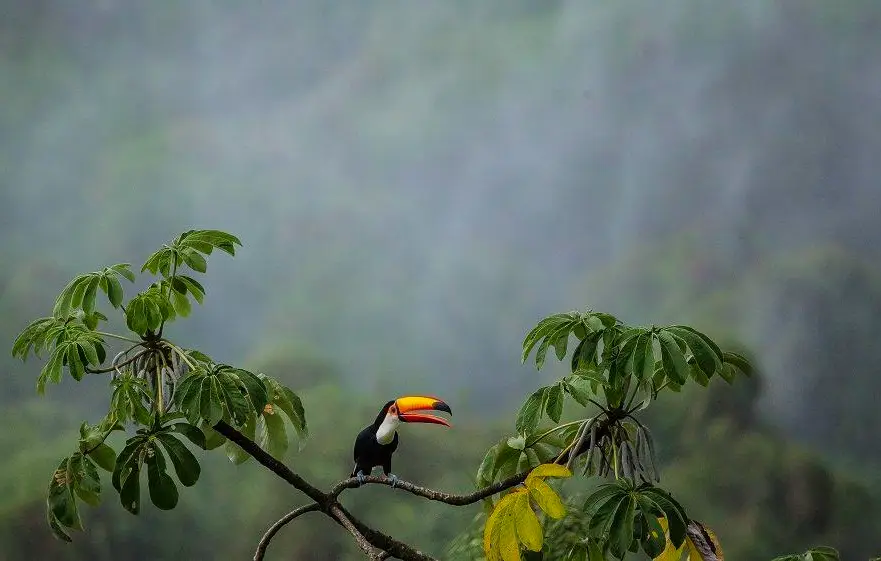Following the failure to meet the biodiversity conservation targets that the international community had set out to achieve by 2020 — the Aichi Targets — in 2022, at the end of the 15th Conference of the Parties to the United Nations Convention on Biological Diversity (COP-15), considered the most important event in the world to conserve biodiversity, the Kunming-Montreal Global Biodiversity Framework was adopted. This framework represents a landmark agreement aimed at halting and reversing biodiversity loss.
What happened to the Aichi Biodiversity Targets?
Recently, the international community has recognized that biodiversity loss and climate change are mutually reinforcing issues. Ecosystem degradation can exacerbate climate impacts, while biodiversity can enhance efforts toward disaster risk reduction (DRR), sustainable development, and climate change mitigation and adaptation goals.
However, the international community did not meet the Aichi Targets, which formed part of the Strategic Plan for Biodiversity between 2011 and 2020 to halt biodiversity loss. None of these targets was fully achieved, nor was there alignment with the Sustainable Development Goals (SDGs), demonstrating that the world’s governments have not made sufficient progress in addressing the global biodiversity crisis.
What is the Kunming-Montreal Global Biodiversity Framework?
This new global framework emerges in this context, setting goals and targets to halt and reverse biodiversity loss by 2030 and ensure that humanity can live in harmony with nature by 2050. These are specific targets for conservation, restoration, financial mobilization, and the integration of biodiversity considerations into economic activities at the global level.
The first target of the Kunming-Montreal Global Biodiversity Framework seeks to protect 30% of land and sea by ensuring that at least 30% of the world’s terrestrial and marine areas are conserved through effective, equitably managed, ecologically representative and well-connected protected area systems. The second goal seeks to restore 30% of degraded habitats, focusing on restoring ecosystem functions and services. The third goal is the reduction of harmful subsidies, by US$500 billion per year. The fourth objective seeks to reduce food waste by half and the fifth is to harmonize financial flows, i.e., to ensure that resource mobilization supports biodiversity conservation and sustainable use.
These targets, also known as the “30×30” targets, essentially seek to ensure that by 2030, at least 30% of terrestrial, inland water, marine, and coastal areas, especially areas of particular importance for biodiversity and ecosystem functions and services, are conserved and effectively managed. This would be achieved through ecologically representative, well-connected, and equitably governed protected area systems and other conservation measures, recognizing, where appropriate, Indigenous and traditional territories.
An effective case in point is the Madidi-Tambopata Binational Great Landscape Program that the Wildlife Conservation Society (WCS) has been implementing since 1999. This is a territory shared by Bolivia and Peru with just over 14 million hectares, which includes eleven national protected areas, two managed areas that provide effective biodiversity conservation, and Indigenous territories and communities of ten different groups, where native peoples help to meet global goals and ensure legal recognition and management of their ancestral territories. Bolivia also contributes to the Ñembi Guasu Landscape, which seeks, through local management, to achieve sustainable use of the territory while contributing to these global goals.
Within this framework, landscapes, seascapes, and oceanscapes must be integrated. In addition, it is essential to ensure that any use of these areas aligns fully with conservation objectives and recognizes and respects the rights of Indigenous peoples and local communities. The aim is to address the root causes of environmental loss, which are economic activities, particularly in key sectors such as monoculture, livestock, forestry, extractive industries, and infrastructure.
Although the commitment and agreements are in place, some countries increase their conservation areas simply with legal documents or decrees, creating new protected areas without the necessary support and local leadership. Or they are expanding the marine area under some conservation status. However, in neither case is there proper implementation and local governance to ensure that these conservation areas are effectively managed. Increasing the area or land in other schemes such as Indigenous territories implies a commitment to the administration and management of these areas.
Why now?
To achieve this goal, holistic solutions are required to ensure that biodiversity considerations are integrated into countries’ economic and development planning. To this end, the framework promotes regional and international cooperation, recognizing that many biodiversity-rich ecosystems are transboundary. Achieving the objectives of the Global Framework that affect Latin America’s diverse ecosystems, such as forests, grasslands, mangroves, and wetlands, requires collaboration among the countries of the region.
One example that requires particular attention is the cooperation between Colombia and Venezuela to conserve the Orinoco grasslands, or Pampas del Sur, a landscape shared by southern Brazil, Uruguay, Argentina, and Paraguay. These grasslands are poorly conserved and their biodiversity and ecosystems are under threat.
The new Global Biodiversity Framework 2030, unlike the Aichi Targets, is designed to be achievable, with measurable outcomes, and aligned with global sustainability frameworks such as the SDGs and the Paris Agreement. It is these alignments that give hope for reversing biodiversity loss.
As such, this new framework represents a critical opportunity to mobilize a diverse set of actors, including policymakers, financial institutions, and companies, to take action to reverse nature’s loss through conservation, sustainable use, and equitable sharing of biodiversity benefits.
*A text produced in conjunction with the Inter-American Institute for Global Change Research (IAI). The opinions expressed in this publication are those of the authors and not necessarily those of their organizations.
*Translated by Janaína Ruviaro da Silva from the original in Spanish.












